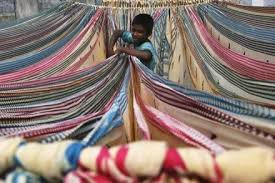Inter-departmental huddle on textile trade amid EU, US FTA talks

New Delhi, June 10, 2025 — With the EU and the US moving closer to a Free Trade Agreement (FTA), India has called a crucial internal meeting. Top officials from the Commerce Ministry, Textile Ministry, and trade departments gathered to evaluate how this deal could affect India’s textile exports. The focus: prepare strategies to protect Indian exporters from a potential drop in market access.
India Faces a New Global Trade Reality
The US and EU are India’s biggest textile buyers. In FY 2023–24, India exported $16 billion worth of textiles to the US and over $9 billion to the EU. Combined, these regions account for nearly 50% of India’s textile exports.
If the EU and US eliminate tariffs on textiles traded between them, Indian exporters could lose their price edge. They would still face tariffs while EU and US products enjoy duty-free access in each other’s markets.
“We’re reviewing how this deal could shift price dynamics and trade flows,” said a senior official involved in the meeting.
What’s at Stake?
Indian textile products may become less competitive. Even a 5% price difference due to tariffs can push importers to switch suppliers. As the global textile market is price-sensitive, this puts India in a tough spot.
The officials discussed key issues:
- Whether Indian exports will face tariff barriers in both the EU and US.
- How shifting trade preferences could reduce India’s market share.
- Whether India’s current trade deals offer enough protection.
They also examined India’s strengths, such as skilled labor, production capacity, and product quality. These could help India stay competitive if the right support mechanisms are in place.
Industry Sounds the Alarm
Export bodies like the Confederation of Indian Textile Industry (CITI) and the Apparel Export Promotion Council (AEPC) have raised concerns. They warned that India could lose out unless the government acts swiftly.
“Without timely agreements, we risk being left out of the global textile trade loop,” said an AEPC spokesperson. The industry wants faster trade talks, higher export incentives, and better infrastructure to match global standards.
They also pushed for more financial support under RoDTEP and PLI schemes. These incentives help reduce production costs and improve competitiveness in global markets.
Key Actions Under Review
The inter-departmental team reviewed several policy ideas:
- Speed up EU-India FTA talks: India is already negotiating a deal with the EU. Officials suggested giving textile exports priority in these talks.
- Explore focused trade deals with the US: Even if a full FTA is not feasible, India can explore sector-specific agreements for textiles.
- Increase export benefits: The RoDTEP and PLI schemes could be expanded to cover more textile products or offer higher support.
- Boost compliance with global standards: The EU and US are raising the bar on sustainability. India needs to invest in cleaner production and labor compliance.
- Diversify markets: Officials stressed exploring new markets like Japan, Australia, and Latin America to reduce over-dependence on the EU and US.
Roadblocks Ahead
India’s ability to respond quickly remains a challenge. Trade negotiations move slowly, while EU-US talks are progressing fast. Smaller Indian exporters also struggle to meet Western sustainability and labor norms.
Competing nations like Bangladesh and Vietnam already have FTAs with major Western economies. They offer similar products at competitive prices without tariff barriers. If India delays, it could fall behind.
Turning Challenge Into Opportunity
Despite the challenges, India has options. With the right mix of trade diplomacy and policy support, it can turn this into a growth opportunity. Officials believe that updating standards and tapping into new markets could position Indian textiles as a global leader.
The textile sector employs over 45 million people in India and contributes nearly 2% to the GDP. A strategic response to changing trade rules is critical for protecting jobs and boosting economic growth.
India’s swift internal discussions show a sense of urgency. If backed by timely action, these talks can lead to strong policy measures that secure India’s place in the global textile market.






